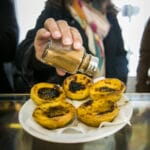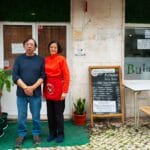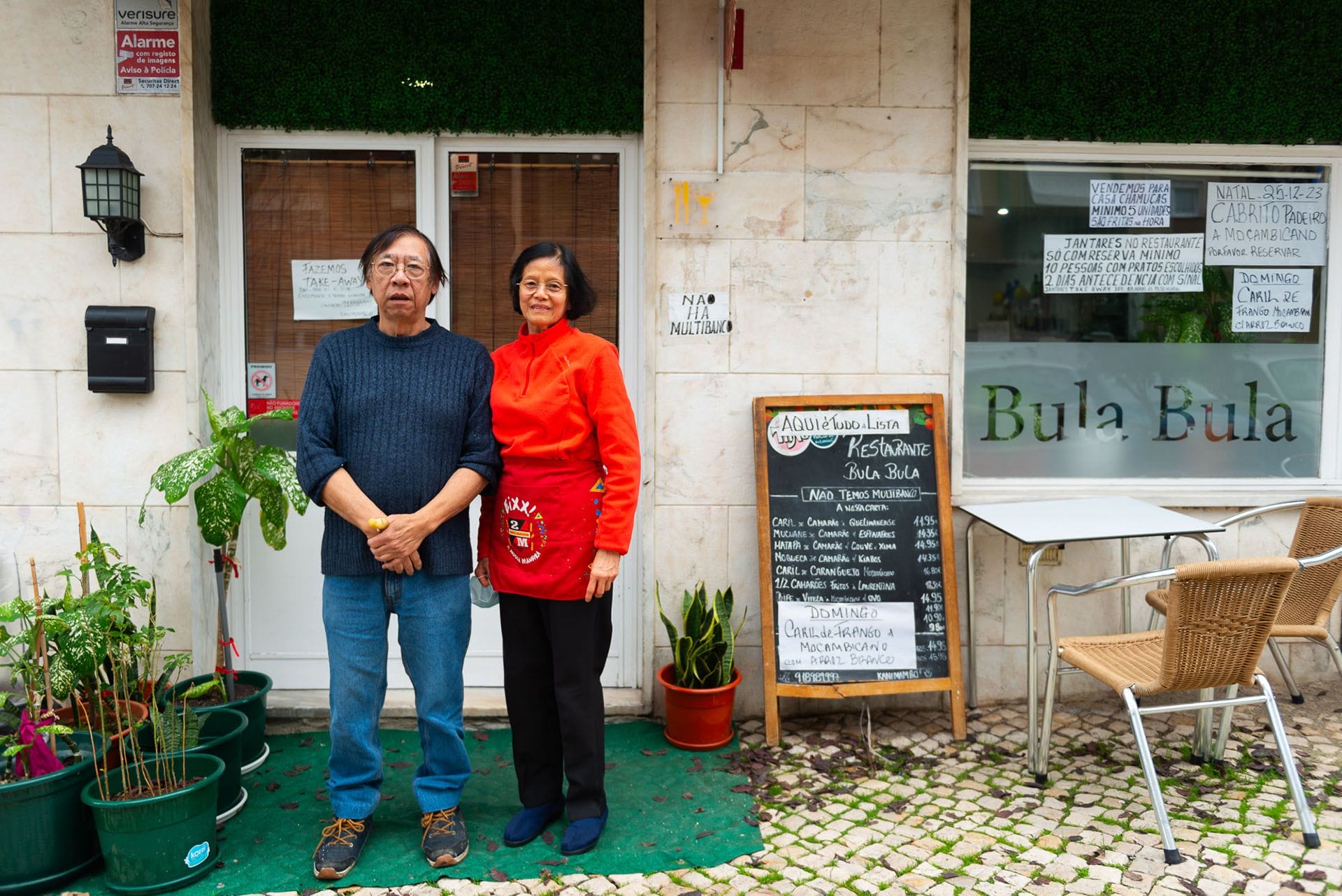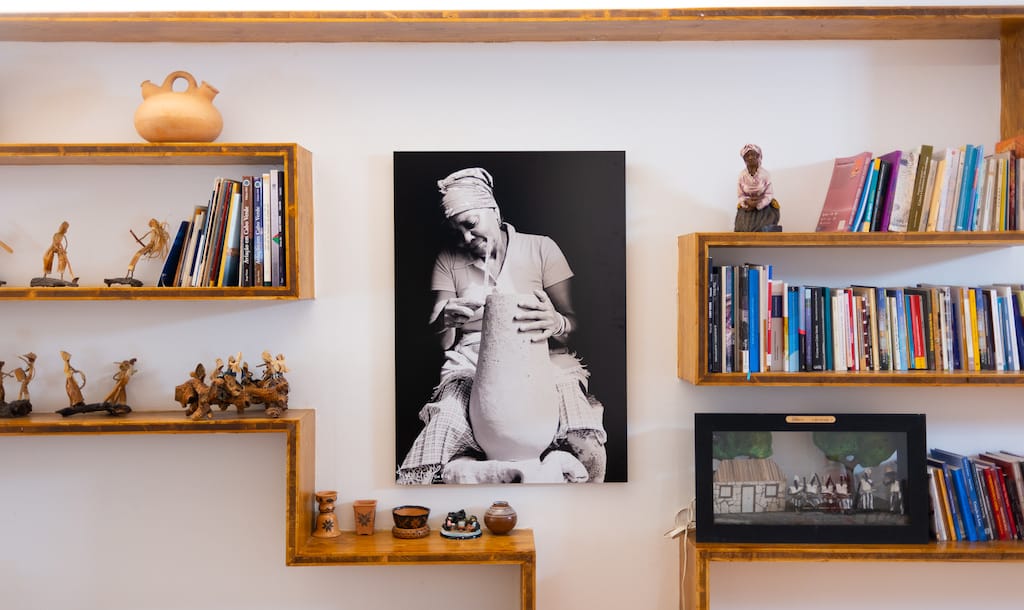We’re in a small café in Lisbon’s Madragoa neighborhood, and all of the disparate dishes loading down the table in front of us – small bread-like balls, a dish that resembles a small crepe, granola studded with flakes of grains, a pudding-like dessert – have one ingredient in common: cassava.
“Cassava is known as the Queen of Brazil,” says Laila Ferreira Soares. “Everyone eats it, it’s always present.”
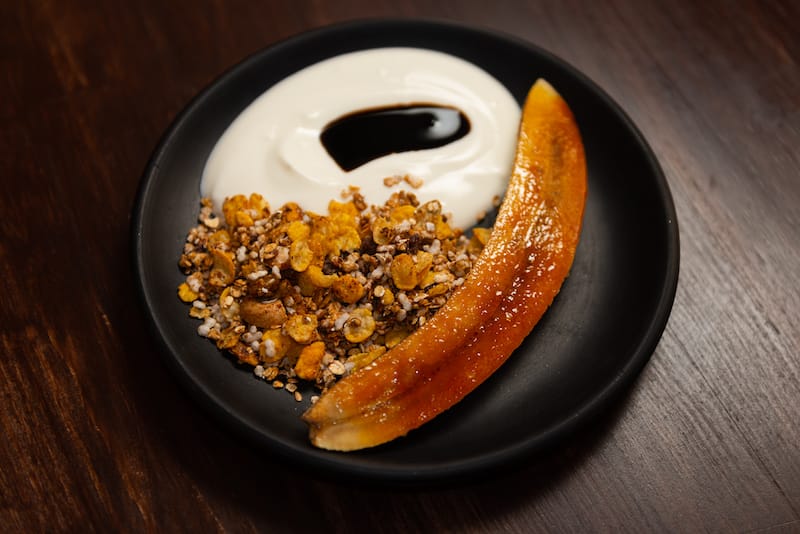
Laila, a native of Brazil, along with her partner, Gregory Busson, a Frenchman, are the pair behind Uaipi, a new café/market in Lisbon with a focus on this particular ingredient.
“I wanted to do something Brazilian, and the most common ingredient in Brazil is cassava,” explains Laila. “Most people see the root and they don’t know how to cook it or eat it. But this is a challenge – I want to educate people about cassava.”
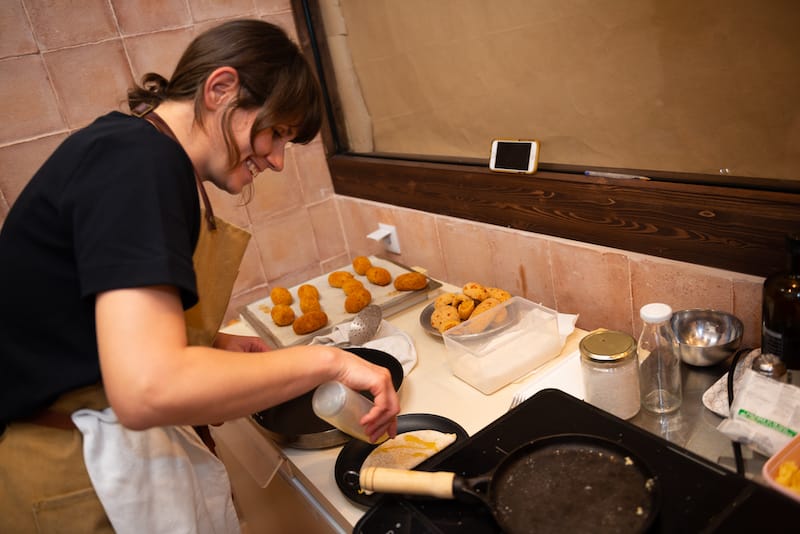
And we are grateful for the education. Cassava, a tuber, has its origins in South America (Uaipi is the Tupi-Guarani – a family of languages in South America – name for the ingredient), and was thought to be first cultivated no more than 10,000 years ago, in Brazil. Raw cassava is toxic, and it must undergo a process of soaking, cooking or fermentation to remove its cyanide. With this done, the root finds its way into a huge amount of preparations. As we talk, Laila pulls out a book that has a two-page spread depicting the various ways cassava is prepared and preserved in Brazil – as a thick liquid, thin flakes, a coarse flour and a dark paste, among others. Today, cassava is one of the most consumed foods in the tropics, having been spread to Africa, Southeast Asia and South Asia by Portuguese colonizers and traders. But those of us who didn’t grow up with the stuff probably only have a vague idea of what it is.
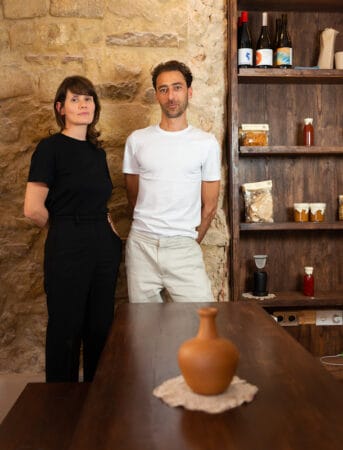
“I never heard about cassava until Laila made me a pommes Parmentier with it,” Gregory tells us. These days, with such a massive Brazilian population in Lisbon, locals are at least tangentially familiar with cassava and its various forms. The pair’s real challenge has not been introducing people to cassava, but rather getting their hands on the good stuff.
“All the cassava flour here in Portugal is terrible,” Laila tells us. “It’s bleached, it has additives.” As such, they have to act as importers, and Laila explains that she sources their cassava flour from a family-run factory in Minas Gerais, the state in Brazil just north of Rio de Janeiro and São Paulo. “It’s fermented cassava flour. It’s rustic – you can see flakes of the peel – and it has a crunchy texture.”
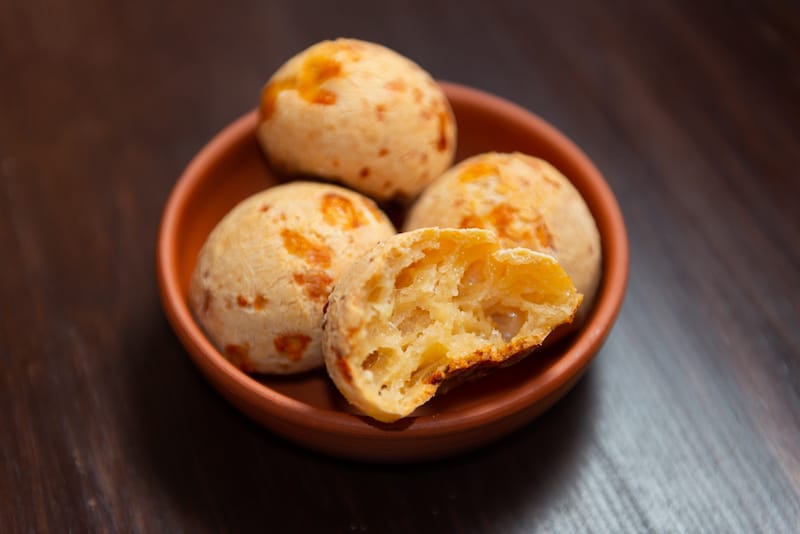
At Uaipi, this product is combined with sweet cassava flour and cheese from the Azores in the form of pão de queijo, perhaps the most well-known Brazilian cassava-based dish. This combination of flours gives the ping pong ball-sized breads a pleasantly elastic, sourdough-like texture; the cheese provides them with a deeply savory flavor. Gregory urges us to dip one of the balls in the house-made doce de leite, an almost caramel-like mix of reduced milk and sugar, the savory mingling with the sweet in a delicious way.
Cassava also makes its way into tapioca, a small, crepe-like dish. Laila gives us a demonstration of how it’s made. She sprinkles moistened cassava starch (also known as tapioca) into a small, hot, cast-iron pan, shifting the grains so they cover its surface, the mixture “melting” and emerging as a thin pancake; one side crispy, the other gooey. The tapioca can be served as-is, folded in half and drizzled with melted butter, or alternatively, the moistened cassava starch is combined with a bit of cornmeal, the finished crepe filled with scrambled eggs and cheese, resulting in something like an omelet with a thin, crispy shell.
Tapioca is also used in Uaipi’s house-made granola, which combines a variety of ingredients almost exclusively from Brazil, as well as into a short menu of desserts. Laila and Gregory also dip into non-cassava-based dishes including a fruit salad with a delicious “vinaigrette” made from reduced citrus juice and açaí oil, and cuscus, polenta supplemented with a poached egg, herb butter and coconut milk. The result is a restaurant that treads some of the same ground as the brunch places currently taking over Lisbon, but with much more backstory, substance and flavor.
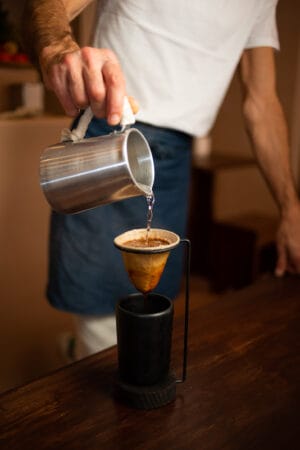
Pour-over coffee, juice and yerba mate drinks round out the café vibe, but ask Gregory, and he’ll tell you that the small but expanding shop is the “heart” of the operation. Currently, Uaipi boasts a shelf with products made in-house: guava ketchup, jars of doce de leite, and bags of sweet tapioca granola, crispy tapioca wafers and dried pão de queijo. The couple tell us that these offerings are set to expand, and that they also want to collaborate with local producers, chefs and others in the food world.
“Like Brazil,” adds Laila, “we’re an example of multiculturalism in the ways that we have brought things from different places and have made them our own.”
Austin BushAustin Bush
Published on July 13, 2023
Related stories
April 4, 2024
LisbonQuick Bite: On this food tour in Lisbon, we’ll experience a cultural feast, tasting some of the most diverse bites of the city’s gastronomy and meeting the people behind them. The oldest city in Western Europe, once the hub of a trading empire that connected Macau in the east to Rio de Janeiro in the…
February 23, 2024
LisbonMozambican, Portuguese and Cantonese – with a fair bit of Indian thrown in. On the surface, it’s an utterly unlikely culinary mashup. But it makes perfect sense at Bula Bula, a restaurant on Lisbon’s northern outskirts. The husband-and-wife owners of Bula Bula, Ana Lee and Fernando Ho, are ethnic Chinese who can trace their ancestry…
June 22, 2023
LisbonOne of the joys of Lisbon’s food scene is the access it allows to cuisines from across the Lusophone world. And one of the most represented is the food of Cabo Verde (formerly known as Cape Verde), an archipelago of 10 islands off the western coast of Africa. Its ubiquity is due to immigrants from…













































